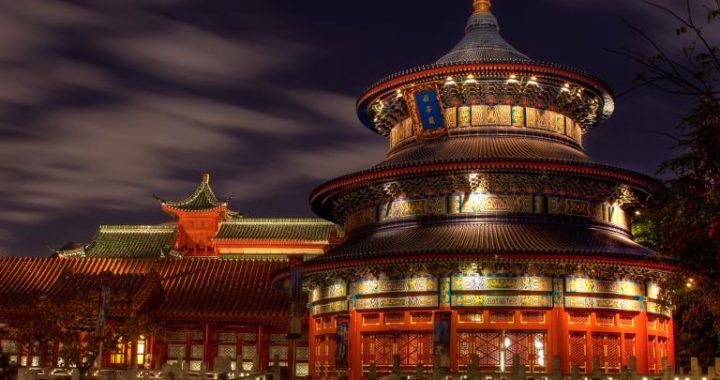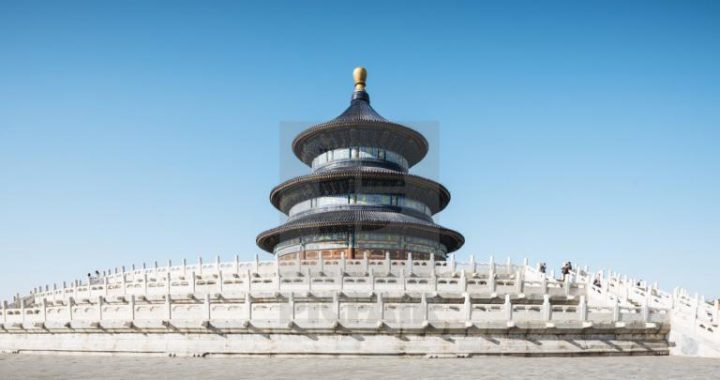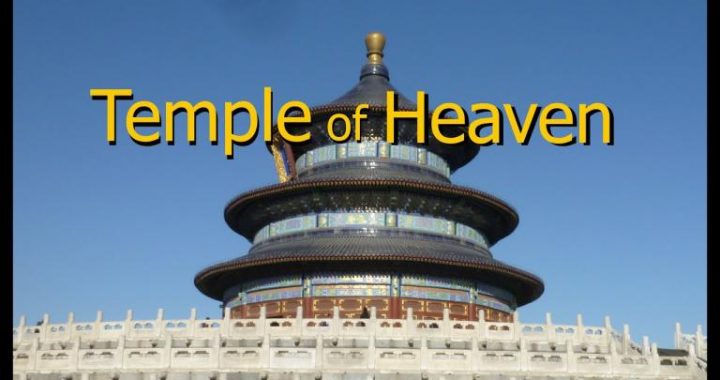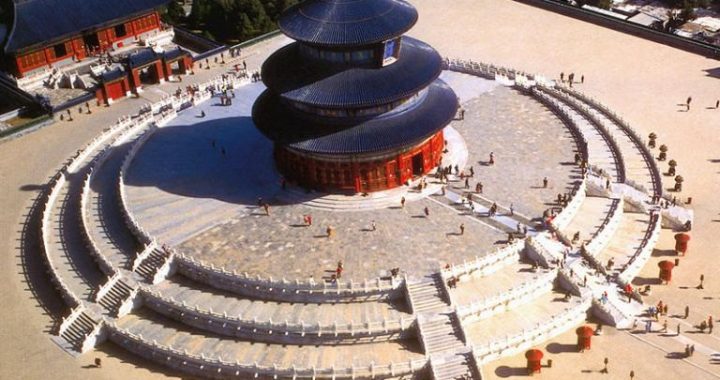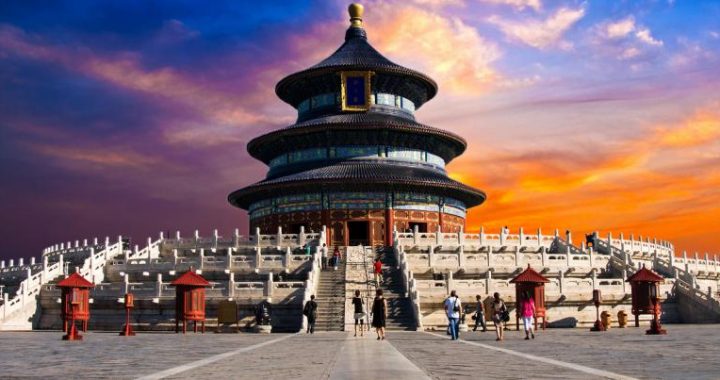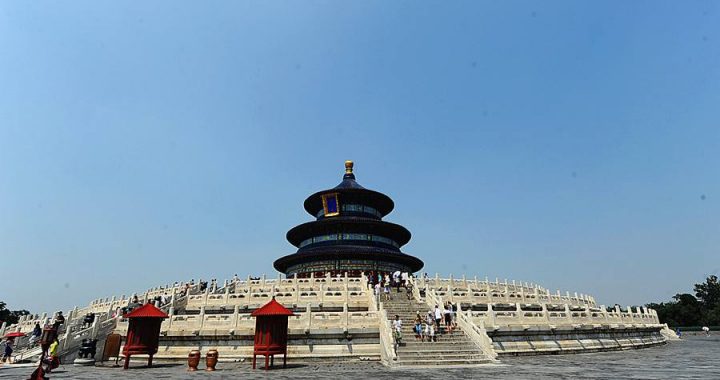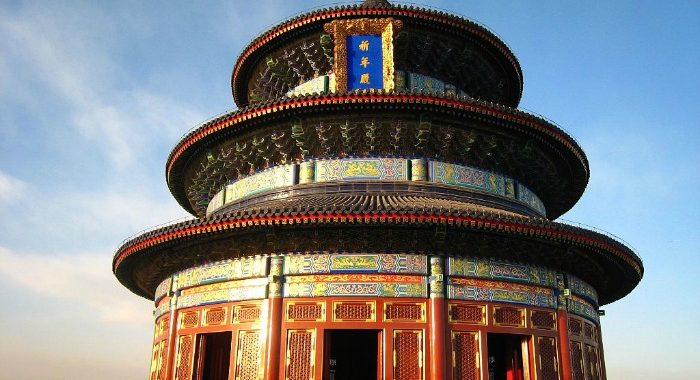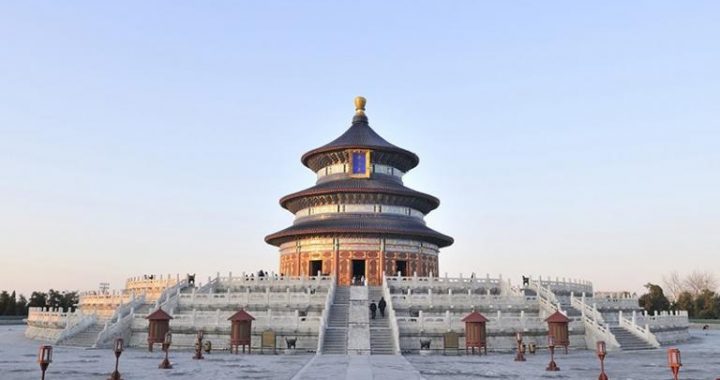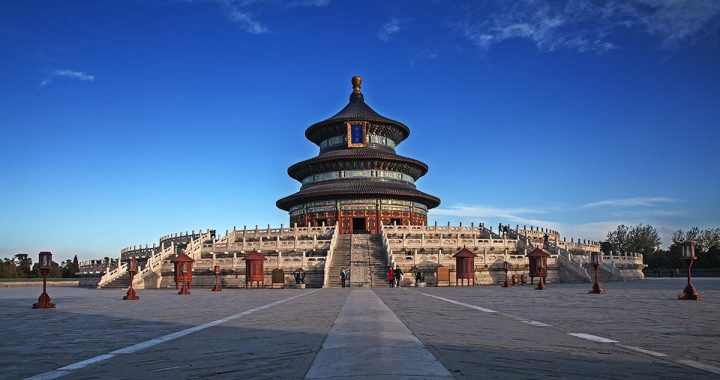TEMPLE OF HEAVEN
3 min readThe Temple of Heaven(tiantan) served Ming and Qing dynasty emperors as vast sacred space to perform ceremonial rites on behalf of the Chinese nation. Prior to the winter solstice, the emperor would lead a solemn procession, which commoners were forbidden to witness, from the Forbidden City to the Temple of Heaven. At first light on the winter solstice, after a night of fasting and ritual cleansing, the emperor would offer ritual sacrifices and make a report to heaven. He would also visit on the 15th day of the first lunar month to pray for a good harvest. The temple was vitally important to the imperial universe as it was the link between the emperor and Heaven. especially in the early morning when limber septuagenarians practice calisthenics. The Temple of Heaven incorporates several religious structures, the crown jewel of which is the Hall for the Prayer of Good Harvests. The layout of the compound reflects its religious purpose and so adheres to geomantic precepts. For instance, the northern end of the park is curved while the southern end is square, reflecting the traditional Chinese conception of heaven as round and the earth as square. Likewise, the park gates are located at the four cardinal points.
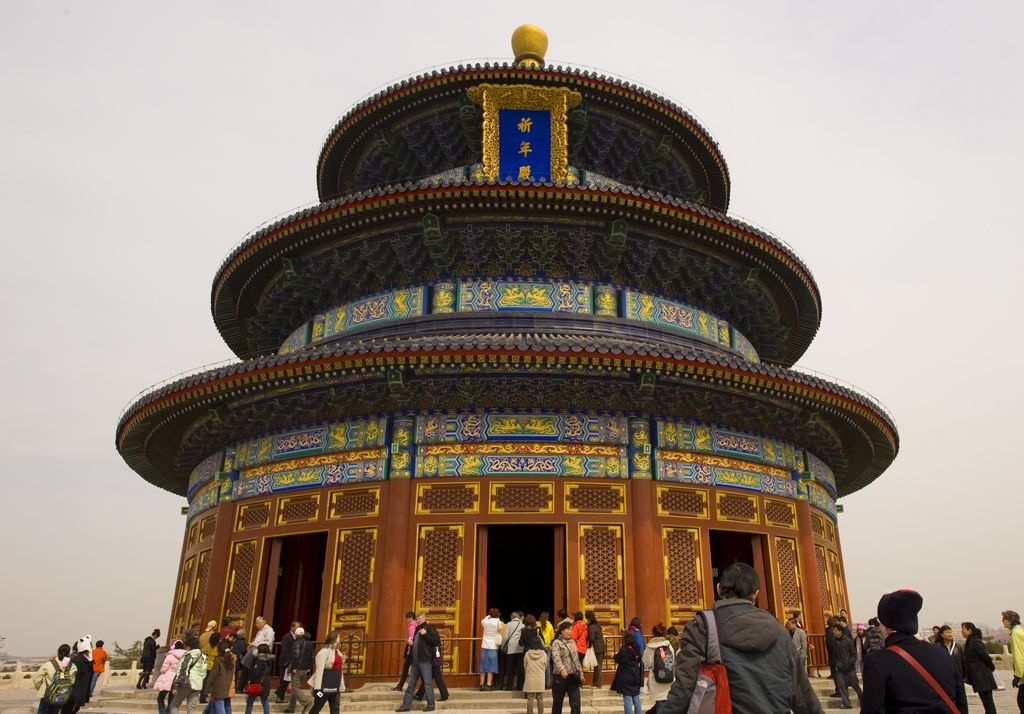
The Circular Altar(huanqiu) is the three-tiered- structure closest to the southern gate. Built in 1530, the Circular Altar was where the emperor, facing north, gave heaven his report. It was acoustically designed to help the emperor’s words reach the cosmos.
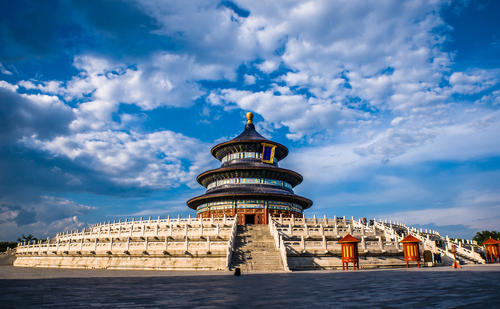
Indeed, the altar magnifies the voice of a speaker standing in its center, though only the speaker will hear this magnification, as sound waves bounce off the balustrades. Another interesting feature of the altar is that it was built with rows of marble slabs in multiples of the number 9, which was considered the most auspicious number. The first row has 9 slabs, the second 18, and so on.
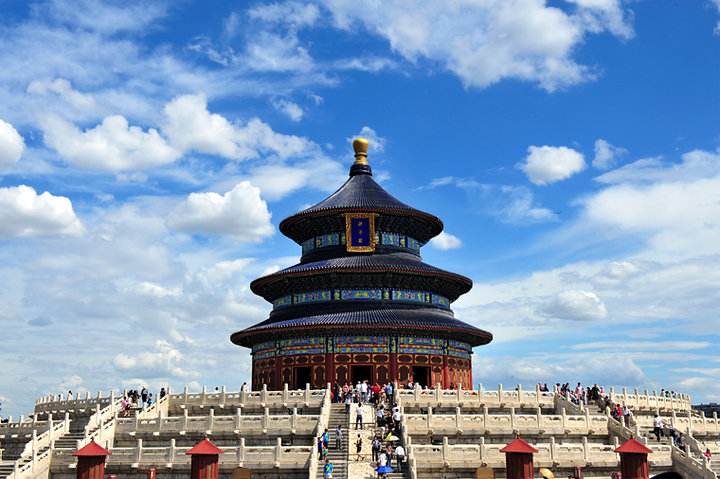
Moving northward, the next compound is the Imperial vault of Heaven (huangqiongyu, which contained tablets of the emperor’s’ ancestors that were used in the solstice ceremony. The vault is surrounded by the Echo Wall, which has marvelous coustic properties. Its curvature acts as a parabola allowing two people to converse in quiet voices at a great distance from each other. However, on a crowded day when every visitor attempts this experience, all you may hear is a cacophonous muddle. The designers of the temple grounds incorporated numerous unique acoustic properties to the layout of the complex as there are many spots where sounds are amplified, echoed or redirected.
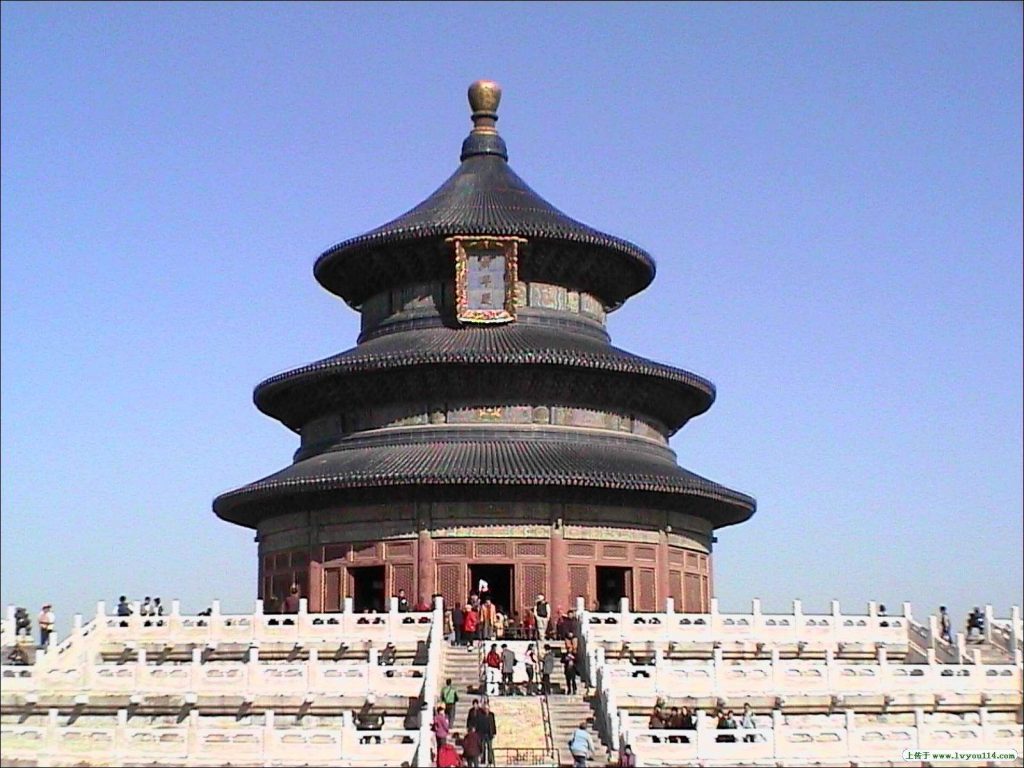
Circle around the outside of the vault after exiting and proceed north through a gate to the elevated walkw walk, the Hall for the Prayer of Good Harvests will rise into view. This is where the emperor prayed to heaven on behalf of his subjects. This wooden tower was erected without a single nail, it’s held in place by an ingenious system of supporting beams and massive pillars. The design is also rich in symbolism. Topped by a golden orb, its cascading roof is blue, representing the color of heaven. The four central pillars represent the seasons, the 12 inner pillars symbolize the months, and the 12 outer pillars symbolize the 12 watches of the day. Inside the hall, on the ceiling, is a single golden dragon representing the emperor. Initially constructed in 1420, the Hall was set ablaze by a bolt of lightning in 1889 and was faithfully rebuilt with lumber imported from Oregon.
